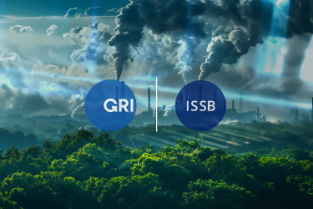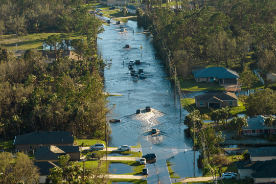Business
GRI + ISSB Interoperability How to avoid duplicate emissions disclosure work.

The rapid evolution of sustainability reporting has left many companies struggling with overlap between frameworks. Two standards dominate in different arenas: the Global Reporting Initiative (GRI), widely used for stakeholder-focused reporting, and the International Sustainability Standards Board (ISSB), which builds on the TCFD and SASB legacy to deliver investor-focused, financially material disclosures. Both require detailed emissions reporting, and without careful planning, companies risk creating duplicative processes that drain resources and confuse audiences. The key is to design a reporting approach that treats GRI and ISSB as interoperable, not competing frameworks.
At the heart of the overlap lies greenhouse gas emissions disclosure. GRI Standards (305) require companies to report Scope 1, Scope 2, and Scope 3 emissions with a focus on completeness, stakeholder relevance, and broader societal impact. ISSB’s IFRS S2, by contrast, requires disclosure of the same scopes but emphasizes decision-useful data for investors: emissions intensity, links to strategy and risk management, and scenario analysis. Companies that treat these as separate exercises often double the work—collecting the same data in two formats, producing two parallel sets of reports.
Avoiding duplication begins with mapping requirements. For emissions, the underlying calculation methods (GHG Protocol) are consistent across both standards. This means companies can establish a single emissions inventory that feeds into both GRI and ISSB disclosures. From there, tailoring the presentation to each audience becomes an exercise in framing rather than re-measurement: GRI highlights the social and environmental significance of emissions, while ISSB frames them in terms of financial risks, opportunities, and resilience.
Another way to streamline is to integrate data systems and evidence trails. Instead of maintaining separate data pipelines for sustainability and finance teams, leading companies are building centralized emissions data platforms with controlled access for both reporting streams. Assurance-ready evidence—supplier data, activity records, and calculation methodologies—can then support compliance with both frameworks simultaneously, reducing audit burden and increasing credibility.
Governance also plays a role. Companies that silo reporting teams (one for GRI sustainability reports, another for ISSB investor disclosures) often face duplication. By contrast, firms that align cross-functional governance—finance, sustainability, risk, and operations—can ensure emissions data is collected once, verified once, and then sliced according to disclosure needs. This also strengthens internal confidence in the numbers, making external assurance smoother.
Finally, narrative alignment helps avoid confusion in the market. Stakeholders are beginning to compare corporate GRI and ISSB reports side by side. If the numbers don’t reconcile, or if the story diverges, credibility suffers. By designing a single source of truth for emissions data and aligning explanatory narratives, companies can meet the expectations of both investors and stakeholders without falling into the trap of “double reporting.”
The convergence agenda is advancing—ISSB has acknowledged GRI’s complementarity, and both organizations are working on alignment. But until full interoperability is formalized, companies must take the initiative. The best way forward is not to view GRI and ISSB as a compliance burden, but as two lenses on the same emissions data—one investor-focused, the other stakeholder-focused. Done well, interoperability reduces cost, enhances trust, and ensures that companies speak with one consistent voice on climate performance.

At least 20 people killed in Russian glide bomb attack on village in eastern Ukraine

Transition vs. Physical Risk A decision tree for which risk dominates by industry.

Getting Assurance-Ready — Controls and evidence trails for sustainability data.
trending posts

TOP Categories
Google Web Reporters












3 comments
David Bowie
3 hours agoEmily Johnson Cee
2 dayes agoLuis Diaz
September 25, 2025